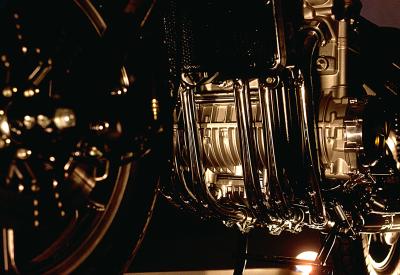
Historically, the carburetor was arguably the single most important part of an internal combustion engine. Newer automobile engines use fuel injection, but marine, lawn and garden, and other smaller engines still predominantly use carburetor technology. The carburetor determines the proper air-fuel ratio for optimal internal combustion, which generates the engine's power. After extended use, carburetors acquire a buildup of residue that must be removed to keep peak performance.
Removing the carburetor from the engine will probably require several steps. First, remove the air cleaner assembly. The air cleaner housing, once removed, should be sprayed thoroughly with carburetor cleaner, then wiped dry and set aside. If the air cleaner is dirty, it should be replaced upon reassembly.
Put on safety glasses. Remove the fuel line or lines, being careful not to drip gasoline excessively. A small screw can be gently twisted into any open fuel lines to prevent further leakage. Remember where the lines attach to the carburetor.
Disconnect the carburetor linkage. This is usually a simple rod, lever, or cable assembly. Only disassemble enough linkage to allow for carburetor clearance when removing. Remember how the linkage is attached, as well as how much slack is present in the linkage prior to disassembly.
Remove the carburetor mounting screws/bolts. Most carburetors have between two and four mounting screws/bolts, depending of the specific application. Remember the proper location for each screw/bolt. Next, gently pull the carburetor free. Be careful not to damage any gaskets upon removal, since you will need them for reassembly.
Place the entire carburetor in a bucket containing kerosene. Be sure the kerosene completely covers the carburetor. Gently slosh the bucket until no more air bubbles arise from the carburetor. Allow the carburetor to soak at least 48 hours.
After soaking, remove the carburetor from the kerosene. The varnish and other deposits in the carburetor will now be much easier to remove. Completely disassemble the carburetor and clean the individual parts with carburetor cleaner, then dry them with compressed air.
Reassemble the carburetor. Make sure all components are installed exactly as they were removed. Be sure to use a new air cleaner element if the old air cleaner element was excessively dirty.